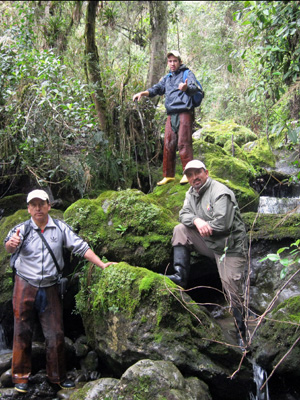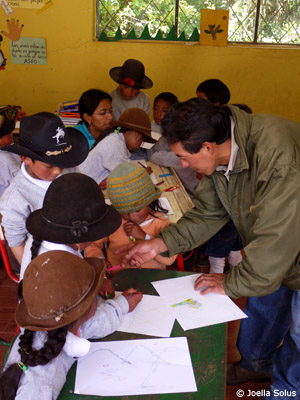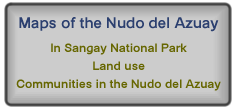

An introduction to our program area
Sangay National Park

In May of 1992, the Ministry of Agriculture and Ranching legally expanded Sangay National Park southward by 245,000 hectares, nearly doubling its original size (see inset on right). The Nudo del Azuay mountain chain is at the heart of this new area. The biological, hydrological, and cultural value of the southern Park’s newly protected páramos and tropical montane forests is unparalleled. The area forms part of the Tropical Andes hotspot and its watersheds feed Ecuador's largest hydroelectric dam. In addition, the region is also archaeologically rich with Cañari (Pre-Incan) and Incan sites.
In contrast with other national parks in Ecuador, Sangay's expansion explicitly recognizes the legal rights of property owners with titles predating the Park's founding. An estimated 4,000 residents live in the southern zone of Sangay National Park, at a population density of two inhabitants per square kilometer. Legal inholdings may occupy as much as 40% of this region of the park.
Our Conservation Programs
A dual strategy dedicated to private and public land protection will be critical to ensure long-term conservation of the region’s natural and cultural resources. Payment for the protection of environmental service (PPES) programs may be an ideal conservation tool on private lands. These binding transactions between private landowners—or service providers—and service users, employ economic incentives to promote one land use over another, thereby making conservation part of the family income. At the same time, FCT aims to strengthen protection of the Park’s public lands from invasions, hunting, and illegal roads. Increased patrolling of public lands, park delimitation, and clear communication with local property owners are short-term imperatives to achieve long-lasting natural and cultural resource protection.
Our conservation efforts seek to incorporate scientific research and long-term monitoring to ensure that public and private conservation areas protect biological and hydrological processes, and that these efforts sum to more than a mere tally of hectares protected. We selected the Andean bear as a flagship species for conservation due to its large habitat requirements, endangered conservation status, and iconic role in Andean culture. Additionally, we have recently implemented a fine-scale hydrological monitoring system.
Concurrent investments in local capacity-building and environmental education aim to train a future generation of conservation stewards. Our environmental education program imparts science-based tools to local school children, teachers, and parents, and the implementation of improved production techniques aims to prevent further advancement of the agricultural frontier and minimize erosion. Finally, a suite of capacity building tools seeks to transfer skills, knowledge, and leadership to the next generation of conservation stewards.